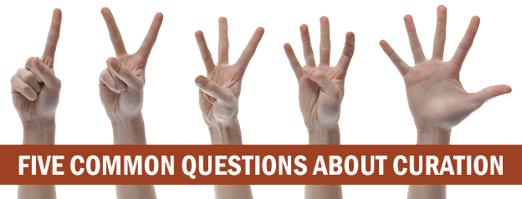
St. Charles Consulting Group’s Perspective on Five Common Questions About Curation
“I was honored to participate in the Degreed LENS 2017 Curation Panel and to share the stage with my colleagues Caroline Soares (Degreed), Pam Possner (Harley Davidson Motors), and Patrick Osborne (OppenheimerFunds).” Gina A. Richter, Ph.D.
Q1: Why is curation important today?
There are four key reasons curation is important today.
- The Content “Tsunami”: We are overwhelmed with the amount of new content in the world. According to a recent Cisco report “It would take more than 5 million years to watch the amount of video that will cross global IP networks each month in 2021. Every second, a million minutes of video content will cross the network by 2021.” The Zettabyte Era: Trends and Analysis. Curation helps filter that content and bring each worker the content they need when they need it.
- So Many “Experts”: There are millions of experts creating new content every day. Why compete with them? Curation leverages the best content regardless of who creates it.
- The Growing Need for Continuous Learning: As we continue to move through the Digital Age, there is no doubt that continuous learning is critical to our success. If organizations can harness and contextualize learning content specific to their business needs, both workers and those organizations win.
- Employees Are Already Doing It: In Jane Hart’s Top 200 Tools for Learning, Google and YouTube remained at the top two spots, as they were last year. This is evidence that your workers are already accessing Google and YouTube to accelerate their learning. Curating content specific to the needs of both workers and their organizations reduces the time workers invest searching for these learning experiences themselves.
Q2: What are some of the challenges of curation and should we no longer create content?
This question is about the mindset shift from “create” to “curate.” It isn’t a total shift. We believe organizational L&D leaders will still create context and activities in which to apply new knowledge and skills, but their first thought needs to be curate and then how do we contextualize it for our learners and our organization.
The next challenge is that every organization believes it’s “special.” Inevitably you hear organizations say, “How can we possibly use generic articles and YouTube videos to upskill our employees? We have a unique culture, specific business processes, etc.”
We believe the answer is about the context the organization builds as it tells its story through the curated pathway of learning. This is where content is transformed into learning experiences. We also believe it is important to remember that organizations won’t always be curating external content. Often organizations are experiencing content overload internally too, and the job of a curator is to focus on those company-specific process documents, etc.
Q3: How important is personalization for learning curation?
At St. Charles Consulting Group, we believe the personalization of a learning journey is critical to the success of any curation strategy and it is why we believe it is critical to complete an upfront analysis to determine specific context. We also believe that without this context, an organization will have only content and not instruction. Because our focus for over 15 years has been in the talent development and learning space, context is a critical component to all of the curation services we deliver.
Q4: What role does scaling play for learning curation?
We believe scaling is another critical aspect of enabling an organization to curate successfully. For global organizations, those who are in each work environment are best suited to develop the context and curate content. Therefore, we have created a strategy to implement at the organizational level to address this need.
Q5: What tips or tricks can you share for successful learning curation?
At St. Charles Consulting Group, we believe that the concept of context cannot be overstated. Any time an organization can extract a quote from leadership that will drive engagement, this is a win for both the organization and the learner because it provides the What’s In It For Me (WIIFM) and helps align with organizational business drivers. These quotes don’t have to be gained only through interviews. They are everywhere. Most organizations have intranet sites with leadership messages, internal blogs, and the like. Remember, curators must be curating internally as well as externally to be successful. The other key to designing effective and instructionally efficient curated learning experiences is that you must know your audience and the business need to develop the right context. Finally, you need to weave a story throughout the curated learning path to ensure that you are integrating the key elements of curated content including:
- WIIFM statement;
- Transition statements to remind them what they just learned and what’s coming next;
- Opportunities for reflection;
- Spaced time between the reading and viewing of experiences and their application;
- Opportunities to share and discuss through a social learning experience; and
- Activities learners can complete with their managers or team to ensure that they transfer the new knowledge and skills back on the job.
Some of these activities can be curated, but they might also need to be created.
Now it’s your turn…go out, be great, and curate!
Written by Gina A. Richter, Ph.D., Director of Curation Services for St. Charles Consulting Group